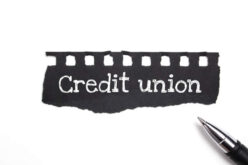But as we look ahead, which payment method will take the crown? Will cards remain the king of convenience, will Apple Pay and other digital wallets cement their place as staples in daily life, or will entirely new technologies disrupt the landscape altogether?
By exploring the strengths, weaknesses, and growth trends of cards, Apple Pay, and other digital payments such as Buy Now, Pay Later (BNPL) and blockchain, we’ll uncover where the world of payments is headed and how tech-savvy consumers can prepare for this dynamic future.
The Reign of Cards: A Deep Dive
For decades, debit and credit cards have been the backbone of global payment systems. Even today, they dominate transaction methods, with 85% of U.S. consumers using debit cards and 72% relying on credit cards.
Cards offer a level of familiarity and reliability that few technologies can match. You swipe or tap, and you’re done. Plus, their widespread acceptance at physical and online retailers secures their position as a trusted option.
However, despite their dominance, cards are not without their challenges. One major concern is security. While measures like EMV chips and PINs provide added safety, card fraud remains an issue, especially online.
Transaction fees are another common drawback, affecting both consumers and businesses. These factors have created an opening for newer alternatives to thrive.
Cards are beginning to adapt to modern demands, with contactless options that use near-field communication (NFC) for faster and more secure payments.
Yet, the competition posed by digital wallets is stronger than ever, with many consumers opting to integrate their physical cards into apps like Apple Pay and Google Pay for added convenience.
The Rise of Apple Pay: A Case Study
Apple Pay has emerged as a formidable player in the payment game, particularly in the U.S., where it boasts a staggering 92% market share for mobile wallet transactions. Processing an estimated $10 trillion annually, this platform exemplifies the future potential of digital payments. But why has Apple Pay risen so quickly?
Firstly, it’s unrivaled in convenience. With just a tap of your phone or a glance via Face ID, users can complete transactions seamlessly. This ease of use extends online with fewer clicks compared to traditional card entry.
Apple Pay’s adoption of NFC technology reaffirms its speed and reliability, ensuring compatibility with a wide range of merchants and point-of-sale systems.
One of the biggest reasons for its success lies in security. Apple Pay employs advanced encryption methods and biometric authentication like fingerprint and facial recognition to safeguard transactions. Unlike traditional card payments, Apple Pay does not share your card number with merchants, drastically reducing the risk of fraud.
That said, Apple Pay’s dominance currently hinges on its status in regions where Apple’s hardware leads the market. The system’s global reach faces competition from regional alternatives such as Alipay in China and Paytm in India. Its adoption also depends heavily on access to iPhones, which limits its universal applicability.
The Expanding Universe of Digital Wallets
While Apple Pay has carved a niche, it is just one of many players in the rapidly expanding digital wallet market. Platforms such as Google Pay, Samsung Pay, and global giants like Alipay and WeChat Pay are reshaping how people transact worldwide.
As of 2025, more than 5.2 billion people use digital wallets, accounting for over 60% of global e-commerce transactions. By 2028, mobile wallet transactions are expected to grow by 77%, reaching a staggering $16 trillion.
Several factors are driving this growth. Digital wallets combine convenience and speed, enabling users to complete payments with minimal effort. Whether it’s paying for groceries, sending peer-to-peer payments, or fulfilling e-commerce orders, mobile wallets eliminate the friction associated with traditional payment processes.
Another key advantage is security. By using tokenization instead of sharing actual card details, digital wallets reduce the risk of hacks and fraudulent transactions. This makes them particularly appealing in a time when cybersecurity concerns are at an all-time high.
Digital wallets are also shaping the future beyond in-store and online transactions. Services like Google Pay and PayPal are integrating additional features such as subscription management, loyalty rewards, and budgeting tools, offering a complete financial ecosystem for users. This versatility positions mobile wallets as the ultimate one-stop shop for managing personal finances.
Emerging Payment Technologies
The payment landscape isn’t just limited to cards and mobile wallets. A wave of emerging technologies is redefining how consumers and businesses think about transactions.
-
BNPL
Buy Now, Pay Later (BNPL) has seen exponential growth, especially among younger consumers. Platforms like Afterpay, Klarna, and Affirm allow customers to split payments into interest-free installments, offering an alternative to traditional credit cards.
However, BNPL faces regulatory scrutiny and requires careful implementation due to the risk of creating unsustainable debt.
-
Real-Time Payments
Real-time payments facilitated by open banking are also gaining ground in markets like Europe and Australia. These systems allow account-to-account transfers within seconds, eliminating the need for intermediaries such as cards or wallets.
They are particularly well-suited for peer-to-peer applications and utility payments.
-
Crypto Using Blockchain
Cryptocurrencies and blockchain-based transactions are yet another fascinating frontier. While still niche, the growing adoption of crypto by businesses and the rise of platforms like Bitcoin Lightning Network showcase its potential.
However, widespread adoption is reliant on regulatory clarity and improved infrastructure.
-
Voice-Driven / AI-Enabled
Finally, voice-driven and AI-enabled payments are starting to emerge, offering consumers the ability to complete transactions through virtual assistants or chatbots. This is an exciting area to watch as AI continues to evolve and personalize the payment experience.
-
Summary Table
Payment Method
2025 Status
Future Outlook (2028+)
Debit/Credit Cards
Widely used, but facing growing competition
Expected to remain significant but see reduced market share due to new technologies.
Digital Wallets
Rapidly growing adoption globally
Dominant in many regions, with innovations improving speed and security.
Contactless Payments
Mainstream technology in payments
Further expansion with tighter integration into digital ecosystems.
BNPL
Increasingly popular among consumers
Greater fragmentation and adoption, with tighter regulations in some markets.
Open Banking/A2A
Accelerating adoption in certain regions
Expected to challenge traditional systems further, providing seamless and direct transactions.
Crypto/Blockchain
Gaining traction in cross-border payments
Continued growth, but mainstream use as a fiat alternative remains unlikely.
Voice/AI Payments
Emerging technology with niche usage
Likely to see improved adoption as AI capabilities advance and trust increases.
The Future Landscape of Payment Systems
Where does this leave us? The future of payment systems is not a zero-sum game. Instead, the payment ecosystem promises to evolve through coexistence, competition, and innovation.
Experts agree that mobile wallets will likely dominate as the primary payment method for most consumers, with Apple Pay taking a lead in markets where iOS devices are prevalent. Debit and credit cards will remain relevant but increasingly as digital credentials stored within wallets rather than physical items.
Emerging solutions such as open banking and BNPL will further fragment the market, giving consumers more ways to pay while challenging traditional banking systems. Cryptocurrencies, while unlikely to replace fiat currency soon, will continue to make inroads, particularly in cross-border payments.
Regional differences will also play a significant role in shaping the future. For example, China may continue to lead with Alipay and WeChat Pay, while Europe might see greater adoption of real-time payment systems.
Adapting to Change in Payment Systems
There is no question that the payment landscape is shifting rapidly. For tech-savvy consumers, adaptability will be vital. Keeping an eye on emerging trends and adopting tools that enhance security and convenience could help future-proof your payment preferences.
Ultimately, the future of payments will be defined by how well these systems integrate into our daily lives, providing seamless, secure, and user-friendly solutions. Whether it’s through cards, Apple Pay, or the next great innovation, payments are no longer just transactions; they are experiences.
other related articles of interest:
How to Choose and Maximize Credit Card Rebate Awards
Digital Wallets Explained: How They Work, Secure Transactions, and Their Future
Image Credit: what will rule payment systems by envato.com
end of post … please share it!
end of post idea for home improvement
view and analyze home improvement ideas at our LetsRenovate center
Helpful article? Leave us a quick comment below.
And please give this article a rating and/or share it within your social networks.













